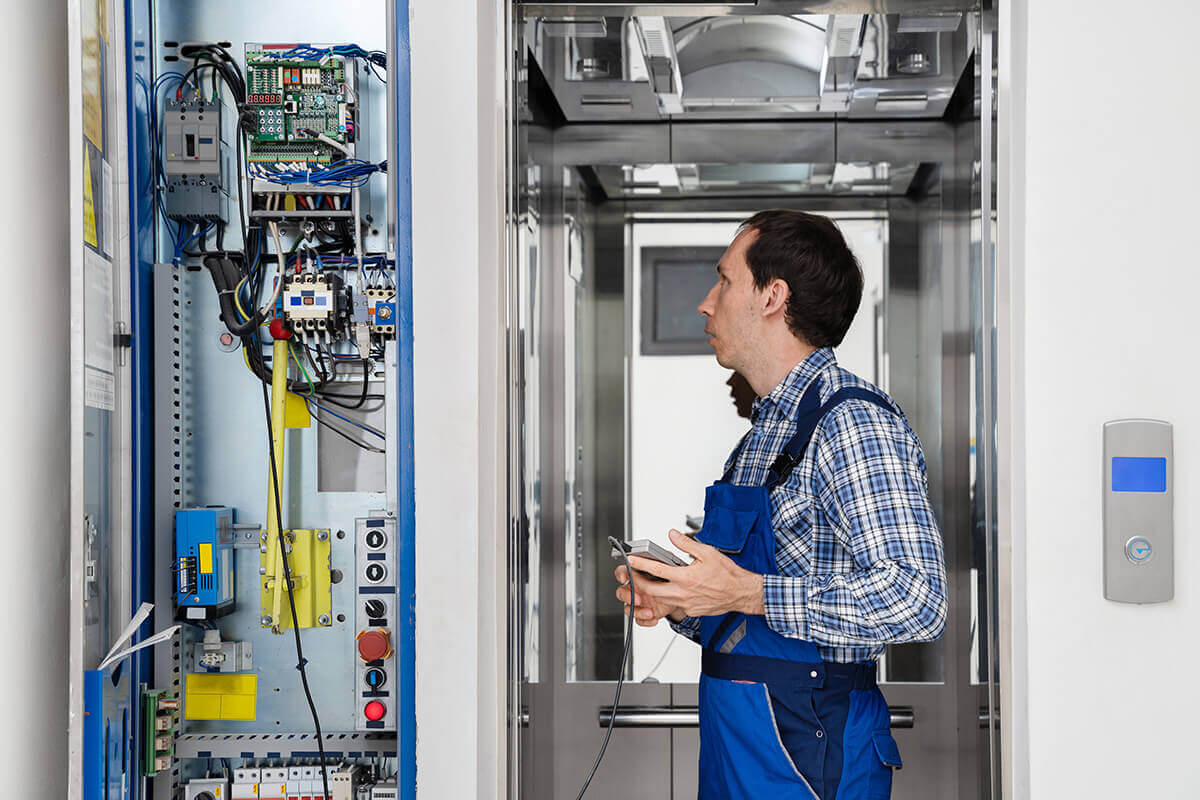Comprehensive Overview to Lift Equipments and Their Upkeep
Navigating the complex world of elevator systems and their upkeep is a job that demands precision and understanding. From the different sorts of elevator systems in operation to the meticulous adherence to safety laws, the upkeep of these upright transportation devices is a multifaceted venture. As buildings soar greater and modern technology breakthroughs, the demand for an extensive understanding of lift systems ends up being increasingly vital. Join us as we unravel the intricacies of elevator maintenance, exploring usual concerns, ideal methods, and sophisticated innovations that form the modern landscape of upright transportation.
Kinds of Elevator Solutions
The most usual kinds consist of hydraulic lifts, grip lifts, machine-room-less lifts, and vacuum cleaner elevators. Hydraulic elevators are suitable for low-rise structures and utilize a hydraulic piston to move the elevator cars and truck. Machine-room-less elevators are a space-saving option as they do not require a separate machine area for the lift equipment.
Each kind of elevator system has its own advantages and disadvantages, making it essential for building owners and developers to thoroughly consider their specific demands before picking the most suitable choice. Variables such as constructing elevation, space schedule, power performance, and budget plan restrictions all play a considerable duty in determining the best elevator system for a particular structure.
Usual Maintenance Concerns
Normal upkeep of lift systems is necessary to make certain smooth procedure and prolong their lifespan. Regardless of normal maintenance, elevator systems can still encounter typical upkeep issues that need to be immediately addressed to stop disruptions in service. Among one of the most constant issues is door breakdowns. Lift doors may obtain misaligned, bring about concerns with opening and closing appropriately. This can create hold-ups and safety hazards, calling for instant attention from maintenance specialists. Another typical trouble is connected to the elevator's leveling accuracy. If the lift doesn't line up correctly with the floors, passengers might experience tripping dangers and pain. Furthermore, issues with the control system, such as sensor troubles or electrical problems, can create the elevator to malfunction or quit working entirely. Routine assessments and aggressive upkeep can aid identify and deal with these usual maintenance problems prior to they intensify and affect the total performance of the elevator system.
Security Rules and Conformity
Complying with strict safety policies and making sure compliance with industry criteria are extremely important for preserving the operational honesty of lift systems. Elevators are subject to a comprehensive collection of safety laws to secure passengers, upkeep personnel, and the public. Governing bodies such as the Occupational Security and Health Management (OSHA) in the United States and the European Lift Organization (ELA) in Europe establish standards that cover different aspects of lift design, upkeep, operation, and setup.
Compliance with these regulations is not only a legal requirement but also a moral responsibility for structure owners and lift upkeep companies. Failing to meet safety and security criteria can lead to fines, legal liabilities, and, most significantly, endanger the safety of people utilizing the lift. Routine examinations, maintenance checks, and adherence to safety and security procedures outlined in the you can find out more guidelines are necessary to make certain the effective and safe procedure of elevator systems. By focusing on safety guidelines and conformity, stakeholders can promote the trust fund of the general public and reduce possible risks connected with lift use.
Best Practices for Upkeep

Building owners should also take into consideration investing in modernization upgrades to boost the performance and safety and security of their lift systems. By adhering to these finest techniques, lift systems can run smoothly and safely, providing reliable upright transportation for owners.

Advanced Technologies for Performance
Executing cutting-edge innovations in elevator systems can substantially boost operational efficiency and traveler experience. lift repair companies near me. One of the crucial advancements in elevator modern technology is the introduction of location control systems. These systems allow passengers to input their wanted flooring before getting in the elevator, which after that guides them to one of the most effective vehicle. By maximizing and lessening unnecessary quits travel paths, location control systems minimize wait times and congestion in high-traffic structures.
Furthermore, the integration of clever sensing units and anticipating maintenance capabilities has actually transformed elevator maintenance. These sensors can discover prospective issues prior to they escalate, making it possible for aggressive maintenance treatments and minimizing downtime. In addition, the use of energy-efficient parts and regenerative drives aids decrease power intake and operating expense in lift systems.
Furthermore, the application of cloud-based surveillance and remote diagnostics permits real-time monitoring of lift performance and prompt troubleshooting of any type of breakdowns. This proactive technique not just improves system integrity but likewise improves the total user experience by making sure smooth and uninterrupted lift operations.
Conclusion
In final thought, recognizing the various kinds of elevator systems, usual upkeep issues, safety guidelines, ideal maintenance practices, and advanced innovations for effectiveness is vital for making certain the useful content smooth operation of elevators. By adhering to safety policies and carrying out finest techniques for maintenance, structure proprietors can lengthen the life-span of their elevator systems and make sure the safety of guests. It is necessary to remain upgraded on the most recent innovations in lift modern technology to boost performance and integrity.
The most typical kinds include hydraulic lifts, grip elevators, machine-room-less lifts, and vacuum elevators. Hydraulic elevators are perfect for low-rise structures and make use of Your Domain Name a hydraulic piston to relocate the elevator automobile. Machine-room-less elevators are a space-saving option as they do not require a different machine room for the elevator equipment. Normal evaluations and proactive upkeep can aid determine and fix these common maintenance concerns prior to they escalate and influence the total performance of the elevator system.
